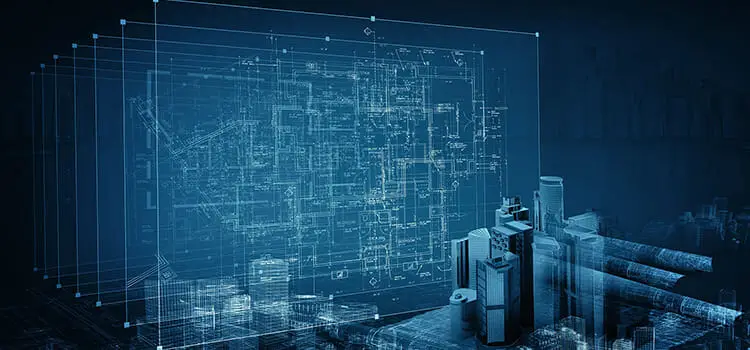6 Ways Technology Is Making Construction Sites Safer & More Efficient
According to the U.S. Bureau of Labor Statistics, in 2019, the construction industry recorded the highest number of workplace deaths, with 1,102 fatal injuries, accounting for 20.7% of all workplace fatalities in the United States.
This is not surprising at all with all the hazards and risks that can be found on construction sites, such as moving objects, working at height, manual handling, electricity, and harmful materials. In fact, 37.9% of all workplace fatalities in the construction industry were caused by falls, slips, and trips.
Technology can help in reducing workplace fatalities. It not only saves the lives of construction workers but also people coming across the construction site.
Take, for example, how the use of a traffic cone alerts pedestrians and drivers of an ongoing construction project on the road. Rapid technological progress can also help construction sites become more efficient. Let’s enumerate the ways technology makes construction sites safer and more efficient.

Ways in Which Technology is Making Construction Sites Safer
From smart wearables to drones, technology has revolutionized the traditional construction work environment. Continue reading below to find out more about this.
1. Drones for Job Site Inspections
A drone can give a bird’s-eye view of the construction site. It is an unpiloted, small aircraft, of which the smallest can be as small as the palm of a hand.
These small aircraft are popularly known as drones, but they are also called “unmanned aerial vehicles,” which were originally used in the military and aerospace industry. If an area seems dangerous to people, drones are sent instead.
Because they can pass through anything in just seconds or minutes, it makes them more efficient in carrying out tasks.
Drones help a construction site with job site inspections and identify potential hazards around the working site. With an aerial view of the construction site, it is easier to inspect structures that are under construction and find defects in high and hidden places.
This way, there will be no need to send construction workers to hazardous places just to check which structures need fixing and attention.
Drones also help in determining which areas around the construction site necessitate the use of traffic cones to alert pedestrians and drivers for possible hazards in just minutes, thus saving time and energy.
2. Robots for Simple and Repetitive Tasks
Simple and repetitive tasks can eat up time, money, and human resources. For efficient use of resources on the construction site, simple and repetitive tasks can just be delegated to robots instead of human laborers. This way, there will be more workers available to collaborate and carry out complicated tasks.
One example of a humanoid laborer is the HRP-5P, invented by Japan’s Advanced Industrial Science and Technology.
This robot can carry out simple tasks such as installing drywall sheets and using power tools. Another humanoid laborer is NASA’s Valkyrie, which can perform construction even in dangerous places like space.
3. Site Sensors for Monitoring
Unseen or invisible hazards are not the only enemies of construction workers. Unseen risks like a sudden rise in temperature can be hazardous as well. Sensors can monitor things like noise levels, dust particles, and volatile organic compounds present inside the construction site.
Examples of sensors used for safety purposes on the construction site are temperature sensors, light sensors, pressure sensors, and displacement sensors.
If the sensor detects abnormal changes in dust particles, for example, it alerts workers of dangerous exposure to them, thus saving lives and complying with the OSHA regulations. Geofencing is another site sensor that alerts workers with lights and sounds when they enter an off-limits area on the construction site.
4. Wearables for Workers’ Safety
Wearables are devices that can really save a construction worker’s life. They determine whether an environment is safe for laborers to work in. These wearables can be embedded in hard hats, work boots, gloves, and safety vests.
They are equipped with GPS and location trackers, voltage detectors, and Wi-Fi to effectively monitor a worker’s movements like slips and falls.
Smart clothing is one wearable that can help monitor a worker’s respiration rate, heart rate, and temperature. They can also determine whether a worker is suffering from fatigue, whether they are intoxicated, or whether they are under the influence of narcotics.
5. Artificial Intelligence & 3D Printing
AI or artificial intelligence is all the buzz these days. But it’s not for data scientists anymore. When integrated into construction works, AI can analyze past data to predict particular construction-related hazards and suggest possible solutions to overcome those. You just need to gather specific data in sectors like the project size, geographical location and condition, equipment details, number of workers, and their past work experience, etc.
Paired with those analytics, AI can not only suggest possible safety equipment but also can help you make it, with 3D printing of course. Most importantly, you can do it on-site, not having to wait months to source it from another country.
6. AR-Based On-Site Training
With augmented reality, training workers for a particular and potentially dangerous construction work can be done easier than ever. Training workers about possible dangers without actually putting them into those situations can only be done with AR.
Detailed training with heavier and very expensive equipment is easy and most importantly, very cheap with augmented reality-based on-location training.
Final Thoughts
It is important to keep in mind that people are the most important asset of any business, and therefore, they must be protected. Technology can help transform the once dangerous workplace, like construction sites, into a safe place both for the workers and the people outside the construction site.
The use of drones, robots, site sensors, and wearables can ensure the safety of workers and the efficiency of the whole construction site.
Subscribe to our newsletter
& plug into
the world of technology






